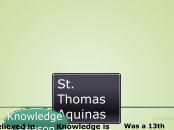por Hania Amir 5 anos atrás
2187
Tree organigram
The correspondence theory of truth posits that the truth of a statement is determined by how accurately it reflects the real world. This theory emphasizes the relationship between a statement and the actual state of affairs it describes.









